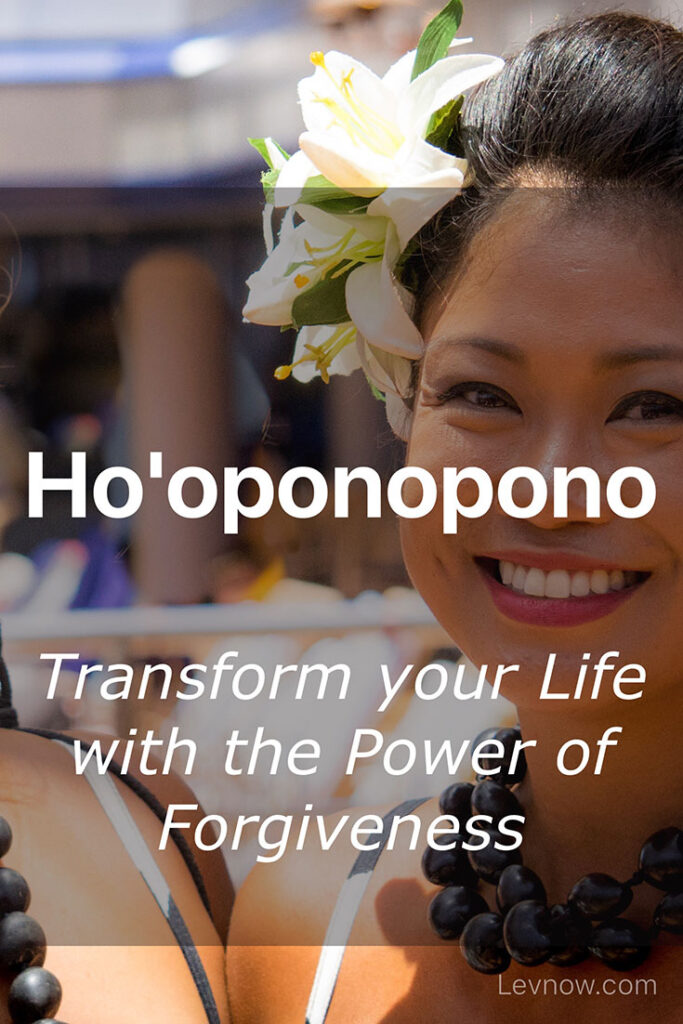In this article, you will explore the fascinating practice of Ho’oponopono and how it can assist you in letting go of negative thoughts. By delving into the principles and techniques of this ancient Hawaiian healing tradition, you will discover how it can bring about a profound shift in your mindset. As you embark on this transformative journey of self-reflection and forgiveness, you will learn to release the burdens of negativity and embrace a more peaceful and liberated state of being. So, let’s delve into the realm of Ho’oponopono and unlock the power to release those unwanted negative thoughts.

Understanding Ho’oponopono
Brief introduction to Ho’oponopono
Ho’oponopono is a Hawaiian practice that involves taking responsibility for our thoughts, actions, and emotions in order to achieve mental and emotional well-being. It is a powerful tool for releasing negative thoughts and restoring inner harmony. The essence of Ho’oponopono lies in the belief that we are responsible for everything in our lives, and by taking responsibility, we have the power to heal ourselves and others. It is a transformative practice that encourages self-reflection, forgiveness, gratitude, and love.
Origins of Ho’oponopono
Ho’oponopono is deeply rooted in Hawaiian culture and tradition. It has been practiced by Native Hawaiians for centuries as a means of resolving conflicts, restoring balance, and maintaining harmonious relationships within families and communities. The word “Ho’oponopono” itself translates to “make it right” or “correct the mistake.” It is based on the understanding that errors and imbalances in our lives are the result of disharmony within ourselves, and by addressing and resolving these internal conflicts, we can bring about positive changes in our external reality.
Components of Ho’oponopono
First component: Repentance
Repentance is a fundamental aspect of Ho’oponopono. It involves acknowledging and taking responsibility for the negative thoughts, emotions, and actions that have contributed to disharmony in our lives. Repentance is not about self-blame or guilt, but rather about acknowledging our role in creating the circumstances we experience. By accepting responsibility for our thoughts and actions, we reclaim our power to change and improve our lives.
Second component: Forgiveness
Forgiveness is another key component of Ho’oponopono. It is about letting go of resentment, anger, and grudges towards ourselves and others. By forgiving ourselves and others, we release the negative energy associated with past experiences and create space for healing and growth. Forgiveness is not condoning or forgetting the actions that caused harm, but rather choosing to free ourselves from the emotional burdens that can hinder our progress.
Third component: Gratitude
Gratitude plays a vital role in Ho’oponopono. It is the practice of expressing appreciation for the blessings and lessons in our lives. Cultivating gratitude allows us to shift our focus from what is lacking to what is abundant, thereby fostering a sense of contentment and fulfillment. Gratitude also helps to cultivate a positive mindset and brings us into alignment with the energy of abundance and positivity.
Fourth component: Love
Love is the foundation of Ho’oponopono. It is about embracing compassion, kindness, and unconditional love towards ourselves and others. Love has the power to heal, transform, and unite. By cultivating a deep sense of love for ourselves, we can expand that love to encompass all beings and create a ripple effect of healing and harmony in the world. Love is the ultimate antidote to negativity and a powerful force for personal and collective transformation.
Practicing Ho’oponopono for Releasing Negative Thoughts
Step 1: Taking responsibility for negative thoughts
The first step in practicing Ho’oponopono for releasing negative thoughts is to take full responsibility for them. Acknowledge that your thoughts and emotions are within your control and that you have the power to change them. Avoid blaming external circumstances or people for your negative thoughts and instead focus on your own internal landscape.
Step 2: Identifying the root causes
To release negative thoughts effectively, it is essential to identify their root causes. Reflect on the underlying beliefs, past experiences, or unresolved emotions that may be fueling your negative thoughts. This self-reflection helps you gain clarity and awareness, which is an important aspect of the Ho’oponopono practice.
Step 3: Repentance and seeking forgiveness
Once you have identified the root causes of your negative thoughts, take the time to sincerely repent. Own up to your role in creating these thoughts and seek forgiveness, both from yourself and from others if necessary. This step helps to release the energy associated with guilt and shame, allowing for healing and transformation to take place.
Step 4: Expressing gratitude and love
Gratitude and love are powerful antidotes to negative thoughts. Practice gratitude by acknowledging the positive aspects of your life and expressing appreciation for them. Cultivate love by embracing self-love and extending compassion towards yourself and others. Infusing your thoughts with gratitude and love shifts your focus towards positivity and empowers you to release negativity.
Step 5: Letting go and releasing the negative thoughts
The final step in practicing Ho’oponopono for releasing negative thoughts is to let go. Once you have taken responsibility, identified the root causes, sought forgiveness, and cultivated gratitude and love, it is time to release the negative thoughts. Visualize them dissipating and being replaced with positive, harmonious thoughts. Trust in the process of Ho’oponopono and allow yourself to experience the freedom and peace that comes with releasing negativity.
Scientific Perspective on Ho’oponopono
Research on the effectiveness of Ho’oponopono
While scientific research on Ho’oponopono is limited, there have been studies that explore its effectiveness in promoting well-being. One study published in the Journal of Evidence-Based Integrative Medicine found that Ho’oponopono led to significant improvements in psychological well-being and self-compassion among participants. Another study published in the Journal of Alternative and Complementary Medicine showed that participants who practiced Ho’oponopono experienced a reduction in stress and anxiety levels.
Psychological benefits of practicing Ho’oponopono
From a psychological perspective, practicing Ho’oponopono can have several benefits. By taking responsibility for our thoughts and emotions, we develop a greater sense of self-awareness and agency. This can lead to increased resilience, emotional intelligence, and a more positive outlook on life. The practice of forgiveness in Ho’oponopono can also promote psychological healing, reduce anger and resentment, and enhance overall well-being.

Case Studies
Example 1: How Ho’oponopono helped an individual overcome depression
One case study involved an individual struggling with depression, who decided to incorporate Ho’oponopono into their daily life. Through practicing the components of Ho’oponopono, they were able to take ownership of their negative thoughts, identify the underlying causes, and seek forgiveness for themselves and others. Expressing gratitude and love towards themselves played a significant role in shifting their mindset and releasing the depressive thoughts. Over time, they reported experiencing a reduction in depressive symptoms and an overall improvement in their mental well-being.
Example 2: How Ho’oponopono aided in reducing anxiety levels
In another case study, an individual struggling with chronic anxiety decided to integrate Ho’oponopono into their daily routine. By practicing the steps of Ho’oponopono, they were able to take responsibility for their anxious thoughts, identify the root causes, and express forgiveness towards themselves and others. Cultivating gratitude and love helped them reframe their perspective and release the anxiety-inducing thoughts. As a result, they reported a significant reduction in anxiety levels, improved sleep quality, and a greater sense of calm and peace.
Incorporating Ho’oponopono into Daily Life
Using Ho’oponopono in meditation
Meditation is an excellent practice for incorporating Ho’oponopono into your daily life. Set aside dedicated time each day for meditation and focus on the components of Ho’oponopono. Begin by bringing awareness to your thoughts and emotions, taking responsibility for them, and seeking forgiveness if necessary. Then, cultivate gratitude and love within your heart, allowing these feelings to expand and envelop you. As you meditate, visualize releasing negative thoughts and replacing them with positive, harmonious ones.
Practicing Ho’oponopono in relationships
Ho’oponopono can greatly enhance relationships by promoting forgiveness, gratitude, and love. When conflicts arise, take a moment to reflect on your role in the situation and take responsibility for your thoughts and actions. Seek forgiveness from the person involved, if applicable, and express gratitude for the lessons and growth opportunities presented. Approach the situation with love and compassion, fostering understanding and harmony within the relationship.
Applying Ho’oponopono in professional settings
Ho’oponopono can also be applied in professional settings to enhance productivity, communication, and work relationships. Take responsibility for any negative thoughts or emotions that arise in the workplace and seek forgiveness if needed. Express gratitude for the opportunities and growth that your work provides, and approach your colleagues and tasks with love and respect. By practicing Ho’oponopono, you can create a positive and harmonious work environment.

Common Misconceptions about Ho’oponopono
Ho’oponopono as a magical fix-all solution
One common misconception about Ho’oponopono is viewing it as a magical fix-all solution. While Ho’oponopono can be a transformative practice, it is important to remember that it requires consistent effort and commitment. It is not a quick fix or a substitute for personal growth and development. Ho’oponopono serves as a tool to support and facilitate healing, but it is ultimately up to the individual to engage in the necessary self-work.
Not taking personal responsibility
Another misconception is not fully embracing personal responsibility in the Ho’oponopono practice. Taking responsibility for our thoughts, emotions, and actions is essential for true transformation. It is easy to shift blame onto external factors or other individuals, but without acknowledging our own role, we miss out on the opportunity for growth and healing.
Misunderstanding the role of forgiveness in Ho’oponopono
Forgiveness is a vital component of Ho’oponopono, but it does not mean condoning or forgetting past harm. It is about releasing ourselves from the emotional burdens associated with resentment and anger. Forgiveness is a personal process that does not require direct interaction with the person being forgiven. It is a means of freeing ourselves from negative energy and fostering inner peace and healing.
Limitations of Ho’oponopono
Ho’oponopono as a complementary practice
Ho’oponopono is a powerful practice, but it should not be viewed as a standalone solution for all challenges. It can be most effective when used alongside other complementary practices and therapies. Combining Ho’oponopono with techniques such as meditation, counseling, or holistic healing modalities can maximize its benefits and support overall well-being.
Individual commitment and consistency
Ho’oponopono requires commitment and consistency for it to be truly effective. It is not a one-time practice but a way of life. To experience the full benefits of Ho’oponopono, it is important to integrate it into daily routines and challenges. Regularly engaging in the practice of taking responsibility, seeking forgiveness, and expressing gratitude and love promotes lasting change and transformation.
Not a substitute for professional help
While Ho’oponopono can be a valuable tool for personal growth and healing, it is not a substitute for professional help. If you are experiencing severe mental health issues or emotional distress, it is important to seek support from qualified professionals. Ho’oponopono can be used as a complementary practice, but it is crucial to reach out to professionals who can provide appropriate guidance and assistance.

Conclusion
Ho’oponopono is a profound practice that empowers individuals to take responsibility for their thoughts, emotions, and actions. By incorporating the components of repentance, forgiveness, gratitude, and love, Ho’oponopono offers a pathway to release negative thoughts and restore inner harmony. Scientific research and case studies have shown the psychological benefits of practicing Ho’oponopono, including improved well-being and reduced anxiety and depression. By incorporating Ho’oponopono into daily life, whether through meditation, relationships, or professional settings, individuals can experience transformation and cultivate a more positive and harmonious existence. However, it is important to be aware of common misconceptions and limitations of Ho’oponopono, viewing it as a complementary practice and not a magical fix-all solution. Ultimately, Ho’oponopono invites individuals to delve into a journey of self-discovery, healing, and personal growth.
